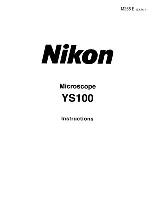
LSM 710 and LSM 780
LEFT TOOL AREA AND HARDWARE CONTROL TOOLS
Systems
Processing Tab
Carl Zeiss
02/2010 M60-1-0025
e
131
5.3.12
Deconvolution
The 3D Deconvolution option is used for the resolution enhancement of fluorescence image stacks.
When a three-dimensional object is reproduced by an optical system the resulting image of the object
does not correspond exactly to the object's actual form. The image of the object is "distorted" as it
passes through the optical system. In physical terms the actual object is convolved by the optical system's
Point Spread Function
(PSF).
The
Point Spread
Function
describes how the light of a point object is distorted by the optical system.
This "convolution" makes the image appear grainy and structures in the image seem blurred. This effect
is most prominent in the axial (Z-)direction as each lens is optimized for the two-dimensional image of the
object.
If the PSF is known it is possible to use mathematical algorithms to undo this distortion. The image of the
object is deconvolved using the PSF and the actual form is reconstructed:
The effect of 3D deconvolution can be demonstrated impressively on objects with a known form. As a
rule fluorescent beads are used for this purpose. The following figure shows the 3D deconvolution of an
image stack with a fluorescent bead with a diameter of 1 µm.
Fig. 139
Point Spread Function (PSF)
Fig. 140
Point Spread Function (PSF)
















































